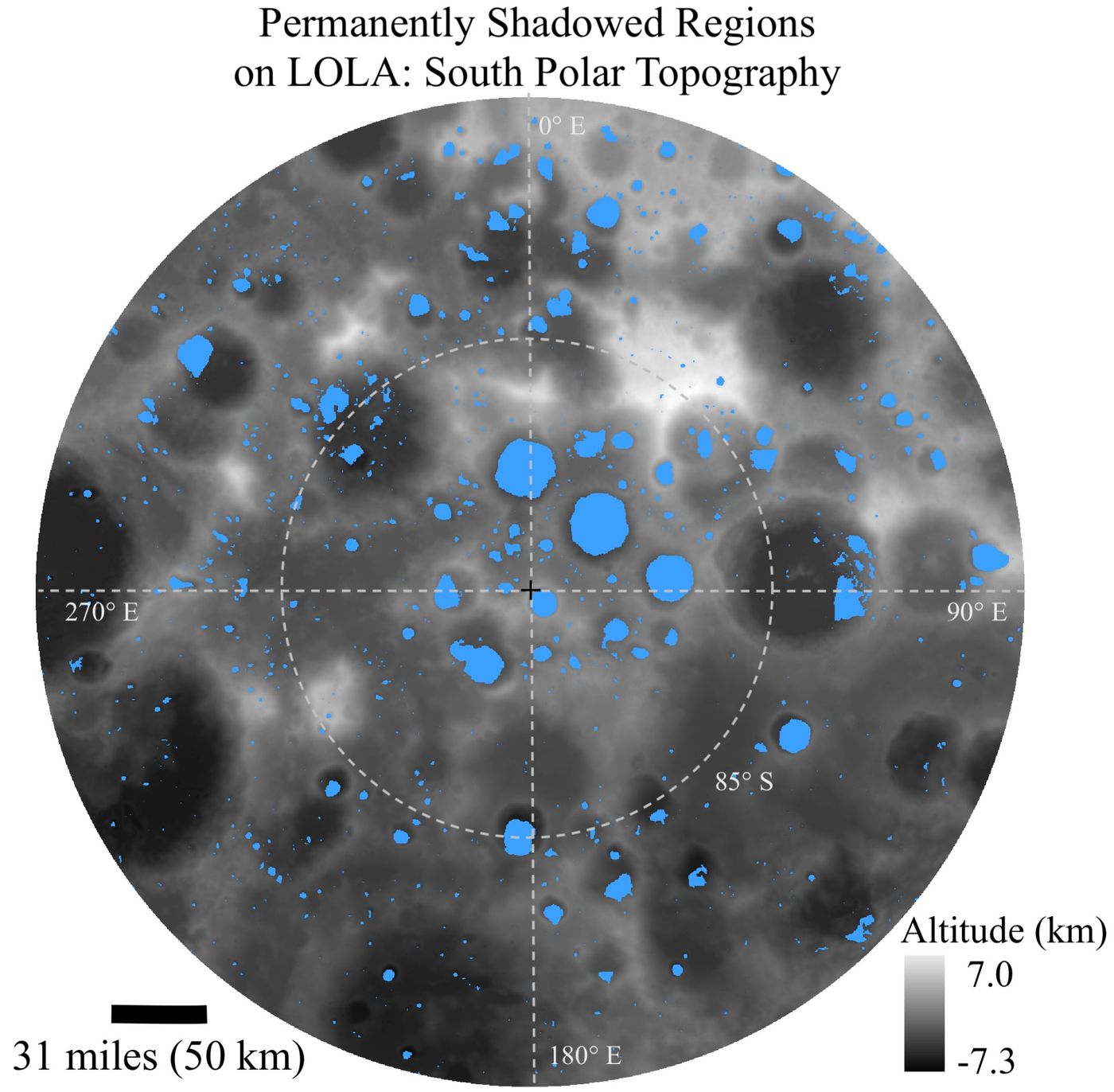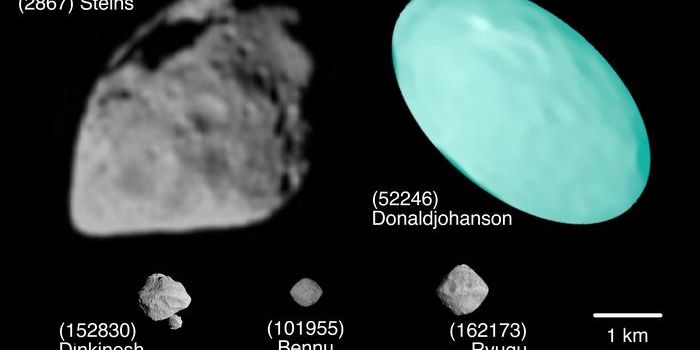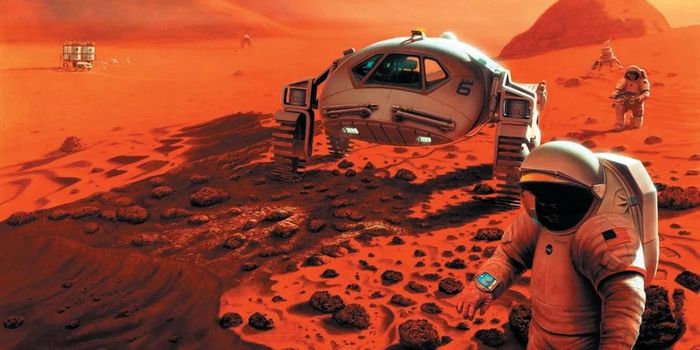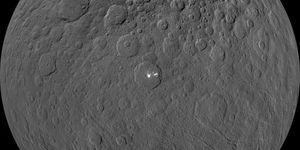Widespread Water Ice Deposits Discovered on the Moon
How much water ice could be present within the permanently shadowed regions (PSRs) near the Moon’s south pole? This is what a recent study published in The Planetary Science Journal hopes to address as a team of researchers investigated how water ice deposits could exist hundreds of miles beyond the PSRs located near the south pole, as opposed to close proximity to the south pole as previous studies have hypothesized. This study holds the potential to enable future crewed missions to locate water ice deposits, which could assist in water usage, oxygen generation from electrolysis, fuel, and energy.
For the study, the researchers used NASA’s Lunar Reconnaissance Orbiter (LRO) to obtain data on hydrogen concentration within several PSR craters near the lunar south pole, along with potential sources of the hydrogen concentrations. The reason PSRs are targets for water ice is due to their extreme depths where sunlight doesn’t reach, resulting in temperatures well below-freezing and the accumulation of water ice over millions, if not billions, of years. The team found that hydrogen concentrations existed in craters several hundred miles from the direct south pole and with temperatures below 75 Kelvin (-198.15 degrees Celsius/-324.67 degrees Fahrenheit). Additionally, the team also concluded that the likely sources of the hydrogen concentrations were from a variety of sources, including solar radiation, comets, and meteorites.
Depiction of permanently shadowed regions on the Moon (blue) near the lunar south pole. (Credit: NASA/GSFC/Timothy P. McClanahan)
“We can’t accurately determine the volume of the PSRs’ ice deposits or identify if they might be buried under a dry layer of regolith,” said Timothy P. McClanahan, who is a research assistant at NASA’s Goddard Space Flight Center and lead author of the study. “However, we expect that for each surface 1.2 square yards (square meter) residing over these deposits there should be at least about five more quarts (five more liters) of ice within the surface top 3.3 feet (meter), as compared to their surrounding areas.”
This study comes as NASA is preparing to sending humans back to the Moon for the first time since Apollo 17 in 1972 with the Artemis Program, along with landing the first woman and person of color on the lunar surface, as well. As noted, the presence of water ice deposits could aid in water usage, oxygen generation from electrolysis, fuel, and energy, which could substantially reduce the cost of shipping water from the Earth to future lunar outposts.
How will these water ice deposits help future crewed missions to the Moon in the coming years and decades? Only time will tell, and this is why we science!
As always, keep doing science & keep looking up!
Sources: The Planetary Science Journal, ScienceDaily, NASA









